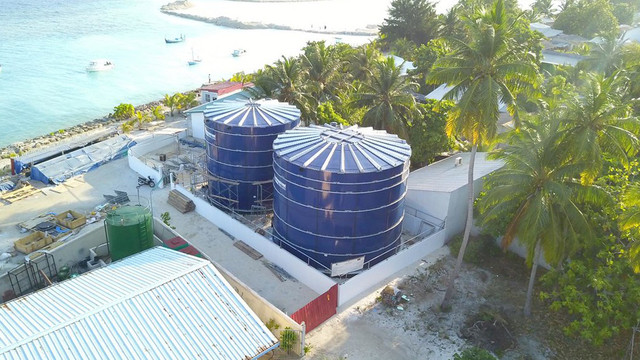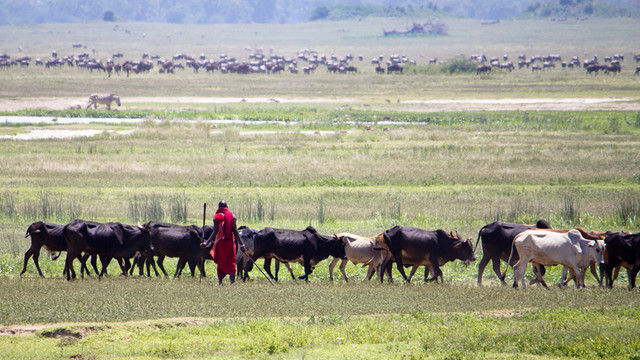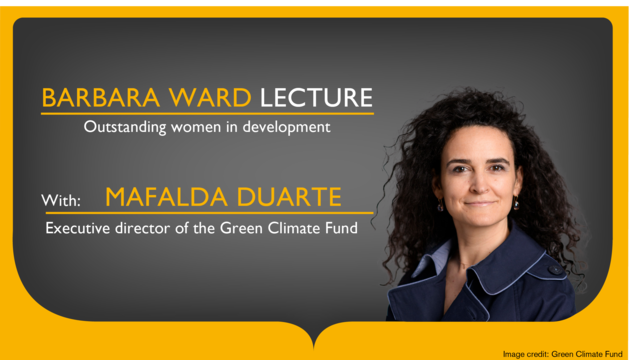Learning from adaptation financing that is working for LDCs and SIDS
A shared vision is needed for the design and delivery of climate finance models that work effectively to deliver funds for adaptation in least developed countries and Small Island Developing States. Gebru Jember Endalew and Sejal Patel reflect on how we can work towards building such a vision



The government of Rwanda, through the Ministry of Environment and Rwanda Green Fund, launched the ‘Strengthening climate resilience of rural communities in northern Rwanda’ project in Gicumbi district. This project, which is being financed by the Green Climate Fund, aimed to increase the district’s climate resilience and prepare residents for the impacts of climate change (Photo: Rwanda Ministry of Environment, via Flickr, CC BY-ND 2.0)
Our colleagues UnaMay Gordon and Tina Stege recently discussed why the financial system across all levels and actors needs reforming to ensure that financing can support local communities in the least developed countries (LDCs) and Small Island Developing States (SIDS) respond to escalating climate impacts, and the need for transformational approaches.
Identifying effective approaches for channelling finance calls for discussions between LDCs, SIDS and providers. What’s working – from both perspectives – and how can we do more of it? What could an effective architecture for transformative adaptation finance look like?
Building a shared vision
A few years ago, the LDCs reviewed the landscape of adaptation initiatives to learn from what is working well and used the findings in LDC work going forward. This approach has proven useful. Now, LDCs, SIDS and the Champions Group on Adaptation Finance are proposing to build on that review over the coming months by taking stock of what has been working well in providing and receiving climate finance.
The objective of this exercise is to build a shared vision for how the funding provided can better support good practices in relation to building institutional arrangements, capabilities, frameworks and delivery mechanisms that enable countries to adapt to climate impacts at the pace and scale needed, and to be agile in responding to uncertainty and to interacting and compounding challenges.
What is working well?
Effective financing arrangements are required to enable good practice for adaptation and resilience building. Good examples include:
-
Ethiopia developed a Climate Resilience and Green Economy (CRGE) strategy in 2011 and a follow-up long-term low-emission and climate resilience development strategy (LT-LEDS) in 2023. The CRGE aims for Ethiopia to become a lower-middle income country by 2025 and to achieve this through economic growth that is resilient to climate change and results in no net greenhouse gas emissions.
It establishes a national financial mechanism – the ‘CRGE facility’ – to mobilise, access, sequence and blend domestic and international, public and private sources of finance to support the institutional building and implementation of the strategy. The CRGE coordinates across several ministries and agencies and national research organisations, with the aim to strengthen these institutions for delivery. -
In Rwanda, the Fund for Environment and Natural Resources (FONERWA) was set up under the national organic law no. 4/2005, and is investing in public and private projects that drive transformative change, as part of Rwanda’s vision to become a low-carbon and climate-resilient economy by 2050. The fund facilitates direct access to international climate finance and streamlines external aid and domestic finance.
The fund can be accessed by government ministries and agencies, districts, civil society organisations, academic institutions and the private sector. It provides grants, performance-based innovation investments and credit at well below market rate. The fund has committed around US$40m to 35 projects. -
In 2022, the Republic of the Marshall Islands passed the Resilience and Adaptation Trust Fund Act (PDF), which seeks to ensure adaptation and resilience building to the impacts of climate change for survival as a viable nation.
It supports long-term adaptation and resilience building by: collecting, catalysing, and growing financial resources dedicated solely to adaptation and resilience; providing steady supplementary and complementary financing for adaptation and resilience; supporting and supplementing public expenditure and external assistance provided by diplomatic and development partners; and enhancing government capacity to effectively plan and manage its national adaptation and resilience programmes and processes. -
In 2019, the Least Developed Countries Group launched the LDC 2050 Vision for all LDCs to be on climate-resilient development pathways by 2030 and deliver net-zero emissions by 2050. The LDC Initiative for Effective Adaptation and Resilience (LIFE-AR) was developed in order to bring the vision down to the national level – for LDCs to develop, strengthen and operationalise their own long-term climate-resilient and low-emission strategies and build on core development interventions in their countries. Work is guided by principles derived from the LDC’s evidence review on adaptation initiatives.
LIFE-AR supports LDCs, in cohorts, to build their institutional and governance structures and pilot finance delivery to the local level through national channels (delivery mechanisms – anything from shock responsive and adaptive social protection programmes to micro, small and medium enterprise business support with climate information tools, to landscape based approaches such as devolving finance to local governments to invest in community resilience), to help strengthen national systems, build track records, and ultimately enable a system where finance is flowing to the local level smoothly via international access and national budgeting.
Good practices
These examples illustrate good practices, including:
- Building a whole-of-society overarching long-term strategy
- Developing clear whole-of-society decision-making structures (national platforms)
- Pooling funding for priority areas (as defined in long-term strategies)
- Building capabilities needed across different actors at different levels to ensure effective participation, planning and delivery
- Ensuring strong legal and regulatory frameworks to set up enabling incentives for integrating climate and development action across governance layers, sectors and stakeholders, and
- Strengthening delivery mechanisms – channels for getting financing down to the local level, including through testing, piloting, experimenting, building capacities and capabilities, strengthening procedures and standards, and building track records.
Towards financing that supports good practice
A key piece is then to understand how the international climate finance landscape can better support and nurture these models and initiatives that are working well for delivery. Some areas are already clear:
- Climate policy-based financing: this is financing based on an agreement in which recipients identify priorities, outline robust modalities and demonstrate a system for accountability and for demonstrating achievement of milestones. It relies on trust that the national platform is set up well, and then trusts the decisions it makes.
This enables a long-term programmatic approach behind the needs of the most vulnerable in a dynamic system and reduces the strain on resources for both providers and recipients that stems from project-based approaches. There is huge potential for increasing this type of funding.
- Multilateral climate funds can improve support by providing harmonised approaches, with access on different terms for LDCs and SIDS (acknowledging their special circumstances), such as by providing truly simplified arrangements for enhanced direct access (which allows national institutions to decide how the financing is allocated through their delivery mechanisms).
- Multilateral development banks (MDBs) can help national platforms deliver effective investments if they pivot to prioritising real concessionality, accessibility, and empowerment over returns and short-term outputs.
Mapping good practice
There is much more work to be done. We need to be learning from a broad range of actors to be highlighting what can be scaled up.
LDCs, SIDS and the Champions Group on Adaptation Finance will be exploring examples and experiences to improve our shared understanding of what has worked and how.
They intend to expand perspectives on what is possible, demonstrate commonalities and principles, and help to develop tangible actions that all actors in the landscape can get behind for improving the adaptation finance support that is available.


